








The magazine of the photo-essay

March 2017 back issue



by Vidhyaa
“A free, really high quality photo-essay magazine. Fabulous!”
Stephen Fry. British actor, writer and film & documentary maker
Villupuram India: The village of Koovagam is next to Ulundurpet taluk in Villupuram district. The Koothandavar temple is
situated in this village. Every year, transgender people from across India gather in Villupuram to re-enact a story
adopted from the Indian epic fable, Mahabharata. It is celebrated in grand style.
The fable of Mahabharata goes like this:
The God, 'Aravaan' (or Iravan in Mahabharata), was born to Arjuna and Naga Princess Ulupi. The Pandavas, decided to
sacrifice a human to ensure victory in a war. Iravan volunteered for the sacrifice, and in return was granted a dying
wish. Before offering himself for sacrifice, Iravan wished to enjoy the pleasures of a woman and die as a married man.
Lord Krishna appeared in female form as Mohini and married him. The next day Aravan was beheaded. Mohini cried,
lamented, wailed and grieved for him like no wife would do for her husband.
During the festival, the 'Aravaani's of Aravaan' identify themselves with 'Mohini' - the female form of Krishna - a woman
trapped inside a man's body. The priest who resumes the role of 'Aravaan' , ties the 'thaali' or 'mangalsutra' to the
Aravaanis and binds them in the relationship of marriage. The next day, 'thali arutthal' or the rituals for widowhood are
followed, which include snapping of the thaali and breaking of the bangles to signify the death of Iravan. The
'Aravaani's' wear white sarees and lament over the death of Aravaan. This is done on the last day of the 18-day festival.
The entire place is filled with the loud wails of the transwomen and their appearance is in stark contrast to the previous
day where they were decorated in wedding attire.
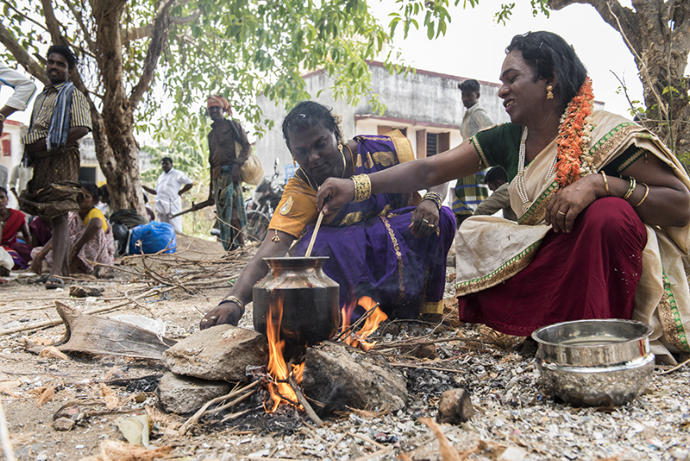
Aravaanis making Pongal (sweets) in Koovagam, India. They are offered to God before marriage.
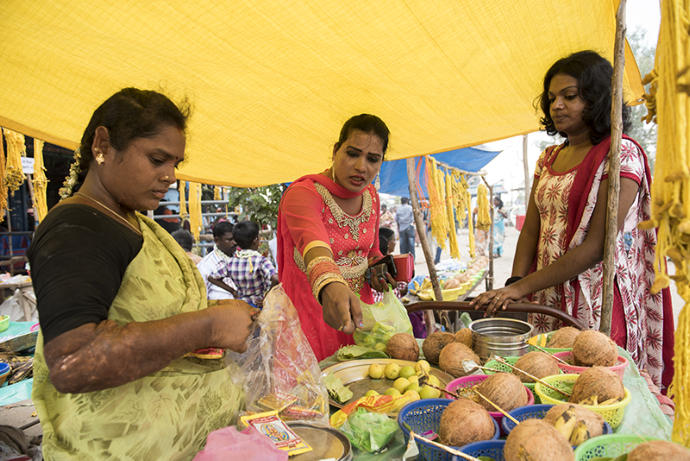
Several stalls are placed in front of the temple. Aravaanis buying items for their weddings.
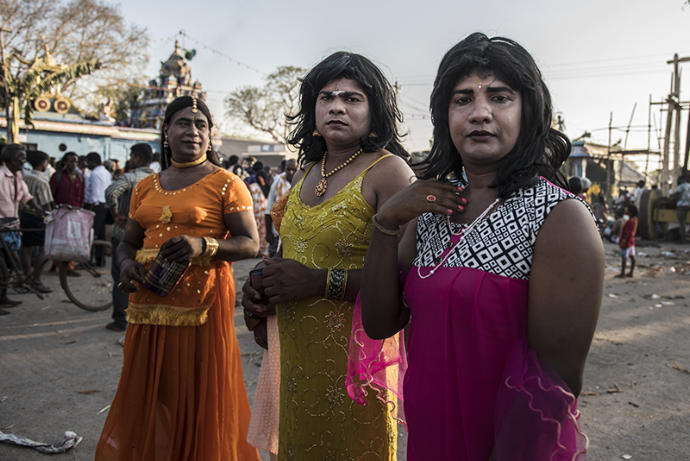
Aravaanis arriving at the temple for their weddings, wearing colourful dresses.

Transgender selecting sacred thread for her marriage.

Transgender people gathered from the country for their marriages.
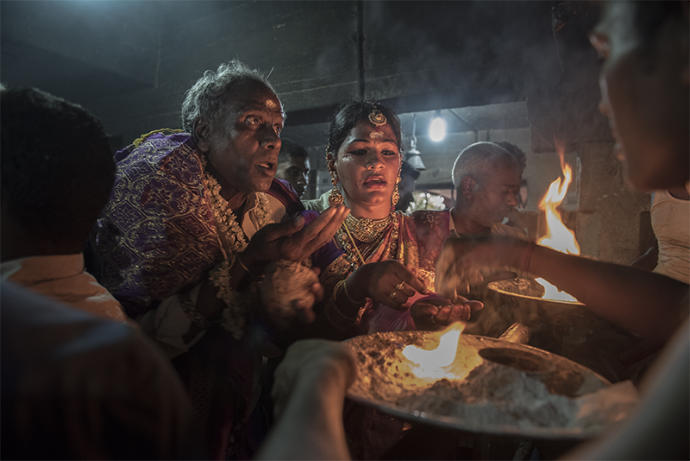
Priest offering blessings to the Aravaanis inside the temple.
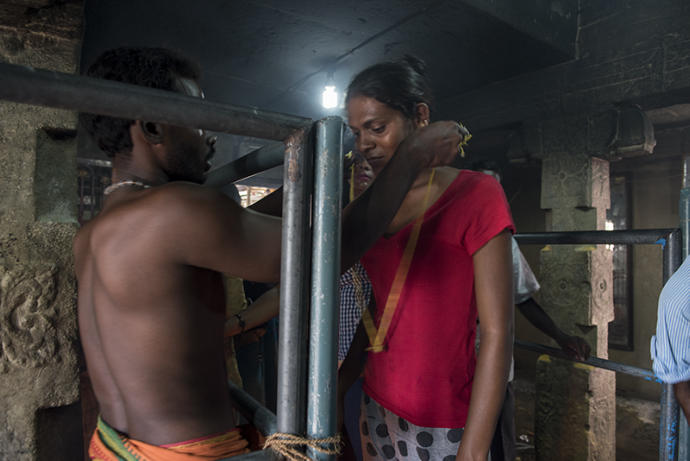
Priest ties yellow thread to Aravaani.
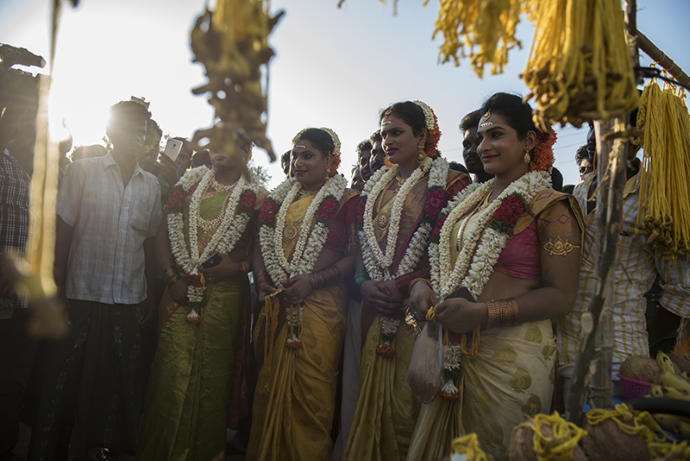
Transgender, in traditional dress, getting ready for marriage.
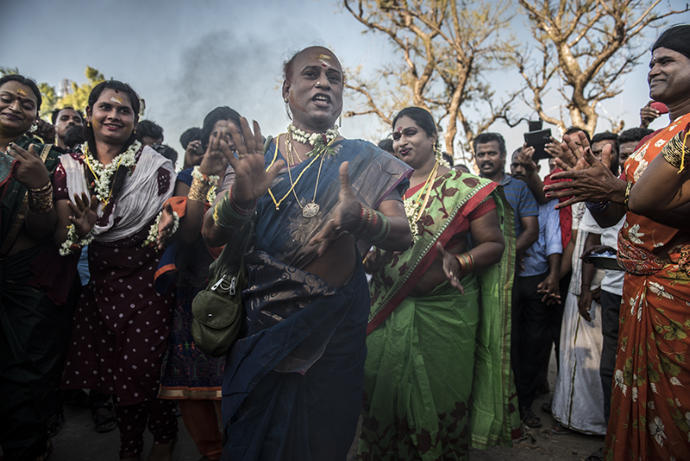
Dancing for joy after her marriage.
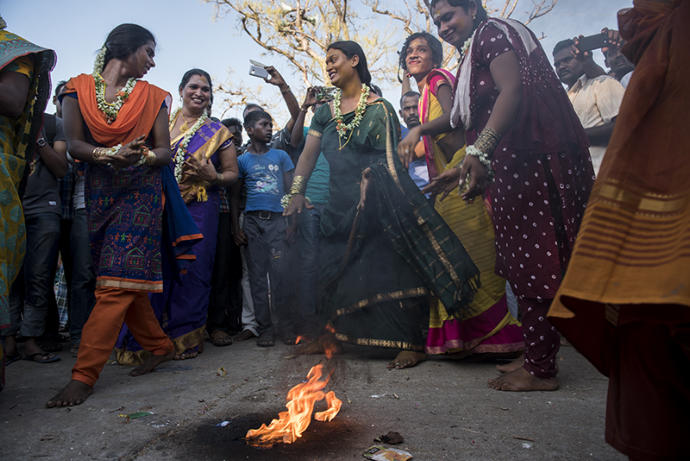
Joyful dancing after marriage.
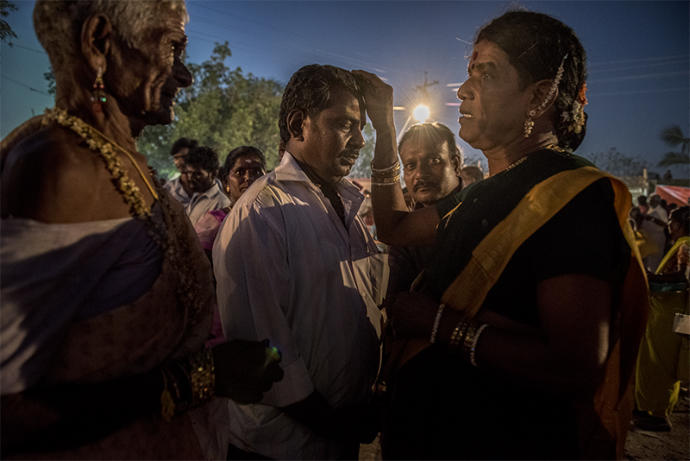
Aravaani blessing the devotees during the wedding.
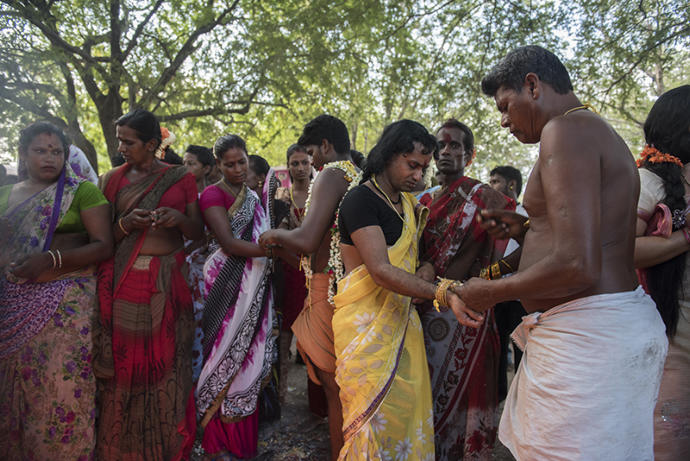
Aravaanis lament during death ceremony.
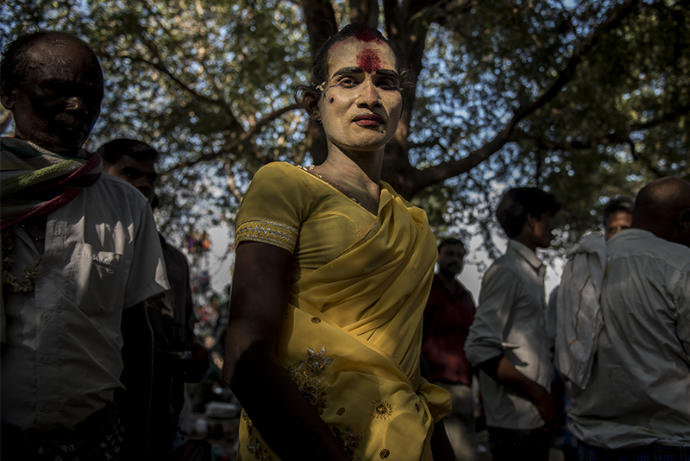
After rituals, transgender gets ready to wear the white saree.
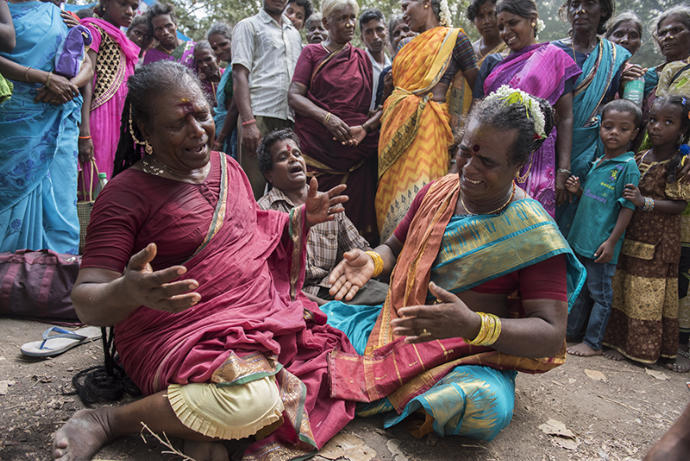
Some of the elderly transgender ashmed of this life.
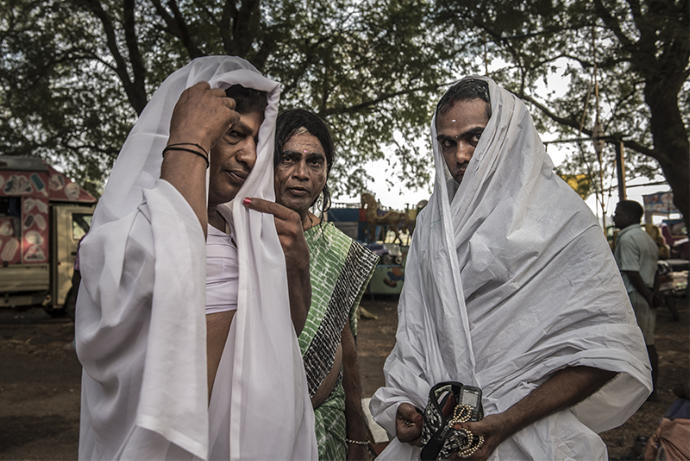
After the widowhood rituals, Aravaanis wear white sarees on the last day of the 18 day festival.
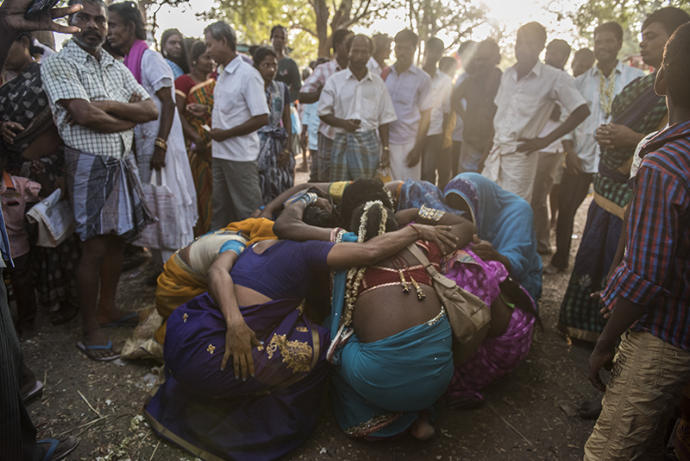
The entire place is filled with the loud wails of the transgenders. Their apperances are in stark contrast to the previous
day when they were decorated and dressed for marriage.
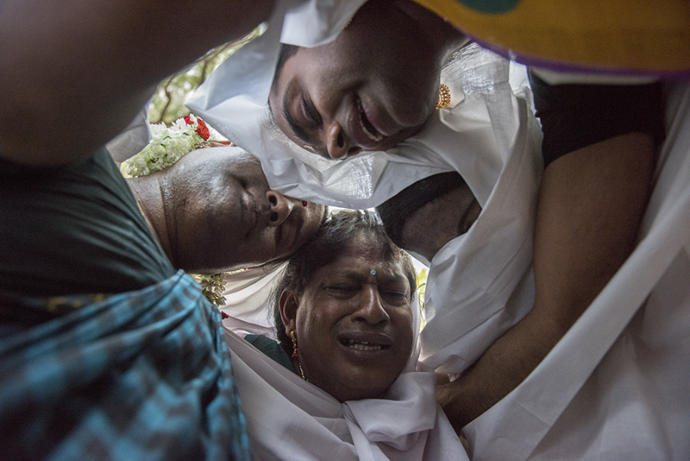
Loud wailing.







